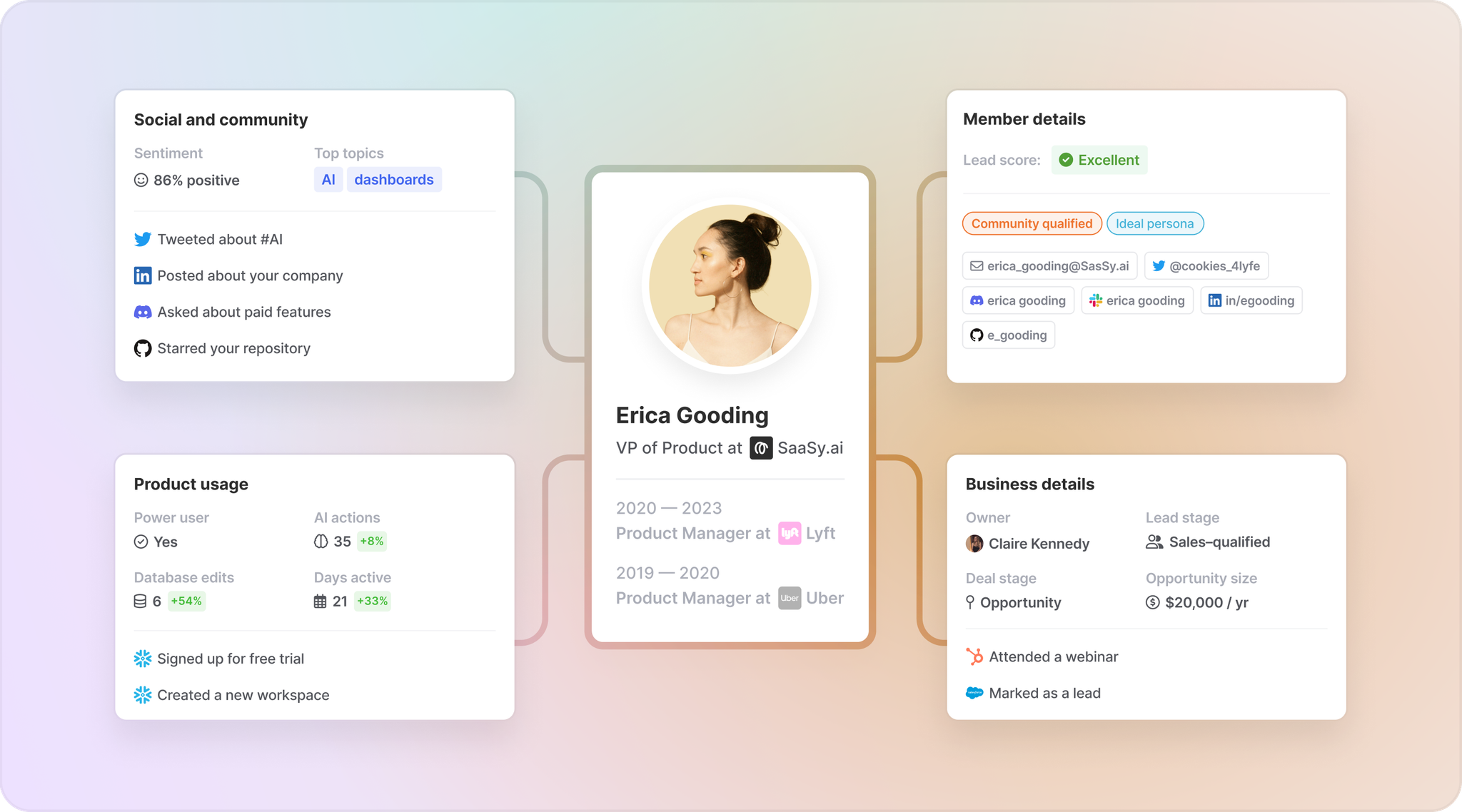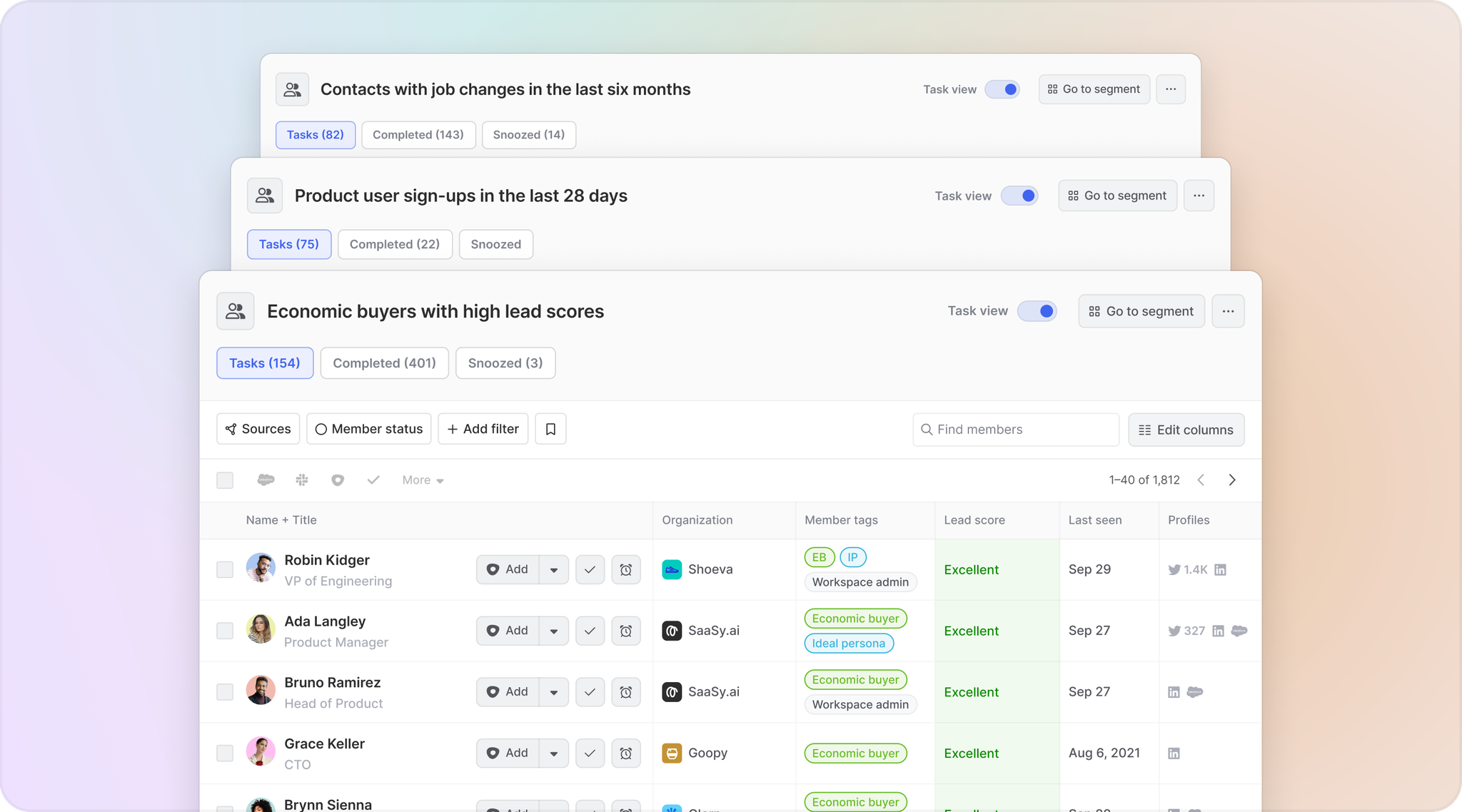Sales productivity is what happens when sales efficiency and sales effectiveness meet.
And based on recent research, it’s also the No. 1 most important metric among sales teams, beating out profit margin and conversion rate.
But productivity is hard to come by in the current sales landscape. Sixty-nine percent of sales pros say their job is harder now, and only 28% expect their teams to hit 100% of quota or more.
If you want to boost sales productivity, now’s a good time to audit your current processes and see where there’s room for improvement.
Keep reading to learn:
- What’s dragging down sales productivity
- How to help sales teams hit quota and then some
- Why the right tooling makes all the difference
Sales teams are struggling with time and technique
Sales productivity is all about output.
Think of it this way: Sales efficiency is related to resource allocation (as in, doing more with less). And sales effectiveness is about how good you are at putting those resources to work.
Sales productivity is the result.
Different companies measure sales productivity in different ways: win rate, revenue per rep, percentage of reps who meet their quota.
But the objective remains the same: Improve team performance to create predictable, repeatable revenue growth.
Here’s where things get tricky.
Sales reps spend 72% of their week on non-selling activities. Much of that time goes to prioritizing leads and researching prospects.
Not to mention the inherent time suck of today’s bloated sales stacks. Sales teams now use an average of 10 tools to close a deal.
In other words, tabbing back and forth between different interfaces is the norm.
But time isn’t the only obstacle. Reps also have to uplevel their technique.
Email outreach is far from dead, but it’s only one way to connect with customers. Organizations now use an average of 10 channels to sell.
Meanwhile, spray-and-pray tactics have lost their luster (and may get you blacklisted by email service providers). Personalization is more important than ever.
But much of the modern buyer journey happens across dark-funnel channels where reps have limited (or zero) visibility. These channels hide buyer identity, intent, and context.
This makes it difficult to know when to connect with buyers, where to reach out, and how to craft messaging that resonates.
Here’s the good news: There are simple steps you can take to increase sales productivity.
3 steps to boosting sales productivity
1. Streamline tedious sales prep
Why do reps only spend 28% of their weeks actually selling? Because a lot of their time is spent on necessary—but time-consuming—prep work.
Data shows that organizations that offload or automate non-sales activities—such as buyer research and lead qualification—can increase sales productivity by as much as 30 percent.
Invest in tools that cut the time it takes for reps to properly analyze opportunities.
2. Double down on prioritization
Research reveals that low-performing B2B sales teams spend up to 50 percent or more of their time on low-value opportunities (that is, customers that make up 20% or less of company revenue).
Prioritizing the biggest and best accounts based on ICP match, spend potential, and other key factors—as well as honing in on the right people within these accounts—can help teams increase revenue per rep by an average of 3-15%.
Give reps the tools they need to quickly separate the high-intent, high-fit deals from the rest—as well as zero in on decision-makers.
3. Replicate your top performers
A recent study of B2B companies showed that productivity leaders focus on improving front line rep performance via data-informed sales plays.
It pays to identify successful plays used by top performers and turn them into repeatable templates other reps can use.
Explore tools that make it easy for all reps to replicate A players.
How Common Room helps you maximize sales productivity
Common Room makes it easy to systematize sales productivity.
Here’s how.
Automate buyer research
Connect your data sources to Common Room—social channels, community forums, data warehouses, CRMs, and more—using dozens of natively built and fully managed integrations.
Our AI-powered identity resolution and enrichment will automatically create a unique profile for every buyer and organization. This makes it easy for reps to surface buyer intent and dig into exactly who’s behind the signal: job title, organization size, product usage, recent cross-channel activities, and much more.
This data can then be used to score leads and accounts—and provide context for why—to help reps focus on the best opportunities.
🎤 "Common Room gives our go-to-market team members daily feeds of users showing intent across multiple channels—all in one place. Over 50% of our meetings come from Common Room."
—Tim Hughes, Vice President of Sales at Temporal

Prioritize leads lightning-quick
Common Room provides easy-to-use filters reps can use to sort opportunities based on any dimension, from job changes to sentiment to annual revenue and beyond.
Meanwhile, automated tags allow reps to quickly hone in on key buyer personas, including ideal customer profiles, economic buyers, and product-qualified leads.
This makes finding high-value deals and following up with the right people a breeze.
🎤 "Common Room has made it easier for our SDRs and AEs to book more and better meetings. It’s our favorite sales tool here. One of our AEs called it 'my closest friend.'"
—Tyler Hayden, Director of Sales Development at Pulumi

Build repeatable sales plays
Common Room allows reps to create automated lead lists based on any combination of factors via segments (as well as stay alerted to buyer activities using real-time alerts).
Organizations can create segments for different sales plays that are specific to different business functions—such as SDRs and AEs—and automatically surface them to those reps.
From there, reps can take action all from one place, whether it’s adding prospects to personalized Outreach sequences, sending them Slack DMs, syncing their records with Salesforce, and more.
🎤 "Common Room made the operationalization process easy and within a few days we were off to the races. Our sales team has realized real results with meetings booked."
—Aisha Nins, Senior Sales Operations Program Manager at Apollo GraphQL

There are practical steps every organization can take to increase sales productivity.
But it’s a lot easier when you get your hands on the right tools.
Prioritize sales productivity with Common Room
Ready to see how Common Room helps sales teams get more efficient and effective?

